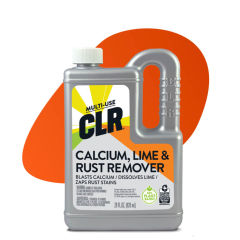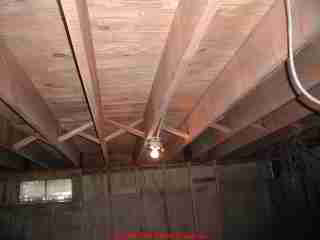 Guide to Mold Cleaning Products & Approaches
Guide to Mold Cleaning Products & Approaches
to Remove Toxic Mold in Buildings
- POST a QUESTION or COMMENT about the best choices of chemicals or cleaners to clean up or remove mold contamination
This document describes choices among common cleaning substances and methods used for mold cleanup of building surfaces and contents.
This article series provides an easy to understand step-by-step guide for dealing with toxic or allergenic indoor mold and other indoor contaminants: what to do about mold.
The steps in this document will be sufficient for many building owners who want to do their own mold investigation, mold testing, mold cleanup, and mold prevention in their home or office.
InspectAPedia tolerates no conflicts of interest. We have no relationship with advertisers, products, or services discussed at this website.
- Daniel Friedman, Publisher/Editor/Author - See WHO ARE WE?
What to Use to Clean Off Mold from Building Surfaces, Contents, Items
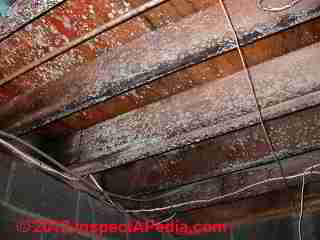 Just below we answer some of the most common mold cleanup questions posed by our readers, followed by a detailed homeowner's guide to popular mold cleaners, mold removers, mold killers, and other mold cleanup approaches.
Just below we answer some of the most common mold cleanup questions posed by our readers, followed by a detailed homeowner's guide to popular mold cleaners, mold removers, mold killers, and other mold cleanup approaches.
What to use to clean off mold
from all of the exposed hard, cleanable surfaces: to clean off a moldy surface, you could use simple clean water, soapy water, spray cleaners, or if you prefer, a commercial biocide (follow their directions) or a dilute bleach cleaning solution.
But because so many readers have asked about specific mold "cleaning" or mold "killing" methods we list and comment on these approaches below.
- Water to clean mold:
After discussing mold cleaning with an expert mycologist (J.H. NYS DOH), we agreed that simple water and a scrubby sponge work fine for cleaning off superficial mold. - Soap and water to clean mold:
using any household cleaner or soap solution, works well where we want to leave a nicer looking surface. - Color of mold does not impact choice of mold cleaner:
it does not matter what color or kind of mold you are cleaning up - in most cases the cleaning methods will be just the same. - Type of surface being cleaned impacts mold cleaner choice:
the type of moldy surface or material being cleaned up matters a lot. Hard surfaces such as wooden objects or wood framing are easy to clean with any cleaning product and a scrubby sponge, rags, paper towels.
See MOLD CLEANUP - WOOD FRAMING & PLYWOOD.- Hard surfaces that don't absorb water
are easiest to clean: wipe the item in or with a solution of warm water and detergent. - Washable items such as clothes, curtains:
use your washing machine and laundry detergent. Clothing that cannot be laundered can be dry-cleaned. - Dusty surfaces
that are not actually holding mold growth can be vacuumed or cleaned using normal methods.
Irregular surfaces such as a roof deck penetrated by nails cannot be efficiently cleaned by hand-scrubbing, and media blasting may be needed. It is virtually impossible to effectively clean moldy carpeting or moldy upholstered couches.
Moldy insulation cannot be cleaned and must be replaced.
See INSULATION MOLD CONTAMINATION TEST
See also MOLD CLEANUP by MEDIA BLASTING - Carpeting (wall to wall), carpet padding, thick upholstered furniture,
sofas, and similar items that have been exposed to wet moldy conditions cannot be effectively cleaned and are normally disposed-of. (Valuable antique furniture might be stripped and sent to be reupholstered.)
Don't spend more on cleaning an object than its replacement cost or value.
- Hard surfaces that don't absorb water
- Total area of moldy materials affects mold cleanup approach:
large areas of mold, more than 30 sq.ft. need to be cleaned up by a professional; if you are tackling a small area of mold, or are hiring someone to do so, be sure that the cleanup stops, and a professional is consulted, if your demolition/cleaning procedure discovers a large area of mold that you had not seen before.
See MOLD CLEANUP GUIDE- HOW TO GET RID OF MOLD. - Cause of mold affects mold cleanup approach:
while it may be reasonable to begin a mold cleanup project as soon as the mold problem is discovered (we do want to get rid of mold indoors), the cleanup job will be ineffective
and possibly you'll be wasting the effort and expense if you don't identify and fix the cause of indoor mold contamination in the first place. Once you have identified and corrected the cause of mold in your building, you'll also want to take steps to prevent future mold growth.
See MOLD PREVENTION GUIDE.
- At BLACK or GREEN ALGAE STAIN REMOVE / PREVENT we include formulas for bleach solution used to clean algae & mold stains off of roof surfaces
- At MOLD CLEANERS - WHAT TO USE [this article] we describe the basics of how to clean off moldy building surfaces and what simple products to use.
- At MOLD SANITIZER, SPRAY, BIOCIDE USE GUIDE we provide a guide to buying and using fungicidal sprays and sealants, we describe mistakes in use of mold sprays, and we define biocide, disinfectant, sanitizer and related terms.
- At DISINFECTANTS, SANITIZERS, FUNGICIDAL-SEALANTS SOURCES we list suppliers of biocides, fungicidal sealants, and related mold sprays and cleanup products.
- At FUNGICIDAL SEALANT USE GUIDE we provide a Guide to Use of Fungicidal Sealants on Wood Building Material
- At SEWAGE CLEANUP PROCEDURES & STANDARDS we discuss how to use bleach, disinfectants & sanitizers in buildings
- At SIDING, WOOD CLEANERS, STAINS, PAINTS - a separate article on how to remove stains on siding & how to choose the proper paint or stain coating - we include formulas for bleach solution used to clean wood siding or trim stains
Guide to Popular Approaches to Cleaning up Mold in a building or on building contents.
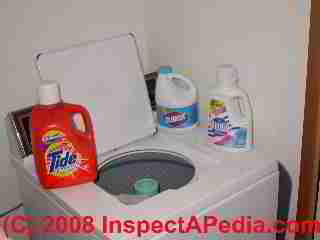 Basic mold cleanup safety warning:
Basic mold cleanup safety warning:
If you are doing your own mold cleanup be sure to wear appropriate protective clothing, goggles, HEPA-rated respirator, better, a respirator that filters both fine particles (HEPA) AND that filters out the MVOCs (gases produced by mold), gloves, etc.
Watch out: If you are asthmatic, immune impaired, sick, elderly, or an infant, it would be smart to have an expert clean up your mold while you stay out of the moldy area or building.
The U.S. EPA recommends these mold cleanup safety tips [our comments are in brackets]
- Avoid breathing in mold or mold spores.
In order to limit your exposure to airborne mold, you may want to wear an N-95 respirator, available at many hardware stores and from companies that advertise on the Internet. (They cost about $12 to $25.)
Some N-95 respirators resemble a paper dust mask with a nozzle on the front, others are made primarily of plastic or rubber and have removable cartridges that trap most of the mold spores from entering.
In order to be effective, the respirator or mask must fit properly, so carefully follow the instructions supplied with the respirator.
Please note that the Occupational Safety and Health Administration (OSHA) requires that respirators fit properly (fit testing) when used in an occupational setting; consult OSHA for more information (800-321-OSHA or www.osha.gov). - Wear gloves when cleaning up mold
Long gloves that extend to the middle of the forearm are recommended.
When working with water and a mild detergent, ordinary household rubber gloves may be used. If you are using a disinfectant, a biocide such as chlorine bleach, or a strong cleaning solution, you should select gloves made from natural rubber, neoprene, nitrile, polyurethane, or PVC (see Cleanup and Biocides).
Avoid touching mold or moldy items with your bare hands.
Bleach makes people more comfortable about their mold cleanup job but except for cosmetic reasons such as removing stains, it is unnecessary in a mold cleanup project -
See MOLD KILLING GUIDE and
see MOLD CLEANUP with BLEACH - Wear goggles when cleaning up mold.
Goggles that do not have ventilation holes are recommended. Avoid getting mold or mold spores in your eyes.
We have had a few reported cases of actual loss of an eye by people who got moldy debris into an eye and failed to recognize and diagnose the problem until too late. But wearing goggles without vent holes, while safer, may mean that your goggles fog and you can't see.
Don't let this mean you simply give up and take them off. Use anti-fogging goggle or eyeglass products.
See MOLD CLEANUP GUIDE- HOW TO GET RID OF MOLD for details.
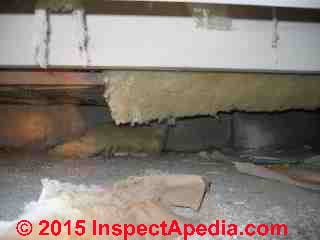
- Air purifiers for mold?
portable indoor air purifiers are ineffective at correcting a mold problem in a building - just consider the mold reservoir in a mold contaminated home as an infinite particle source.
The air "purifier" may pull some particles out of the air but it is no more effective at removing a mold problem than standing in the kitchen, waving your vacuum cleaner wand in the air, and expecting to pick up all of the dust from the nearby living room floor.
An air purifier will indeed reduce the number of airborne particles if it is operated in a small-enough closed room, and that may improve occupant comfort, but air purifiers do not cure nor clean up nor remove an indoor toxic or allergenic mold problem. - Air scrubbers or air sprays of fungicides and disinfectants?
are popular among mold remediation companies who expect the mold clearance inspector to rely on an air test to "pass" the building after a mold cleanup job.
See MOLD CLEARANCE: FOLLOWUP STEPS for a discussion of mold clearance inspections.
Their proponents argue that these products "knock down" airborne mold in the building - a reasonable view considering that demolition and cleaning of moldy building surfaces can stir up high levels of airborne mold.
A similar "cleaning" of the air inside a building after mold remediation may be attempted by "fogging" with a fungicidal sealant paint (also effective, and also risky
See FUNGICIDAL SEALANT USE GUIDE and our comments on fungicidal sprays just below).
The mold remediator who has constructed a contained, sealed area does not want to be blamed for airborne mold entering the building from other areas that were not treated. This makes sense if the building was not fully and competently inspected in the first place, as other problem mold reservoirs outside the remediation area may be present.
But in most locations, simply ventilating the building with fresh air after cleanup can produce the same results.
Beware: if the moldy materials were not adequately removed, if moldy surfaces or debris were left in the work area, no amount of air sprays, surface sprays, or air scrubbing using a HEPA-filtered air handler, will correct the indoor mold problem any more than you can pick up dust from a living room floor by standing in the kitchen and waving your vacuum cleaner wand in the air.
Our photo (above) shows a horrible "professional mold remediation job" in which the cleaning company left moldy insulation and debris in the crawl space.
The contractor simply stood at the crawl space entry and sprayed in some fungicidal paint. - Bleach to clean mold?
Be sure to read- MOLD CLEANUP with BLEACH
- MOLD CLEANUP - WOOD FRAMING & PLYWOOD
- MOLD CLEANUP - MISTAKES to AVOID.
- TRAPPED MOLD BETWEEN WOOD SURFACES a discussion of the question of need to remove mold from mated, inaccessible building surfaces such as between the top of a floor joist and the under-side of subflooring.
Once you've read about bleach it will be clear that any cleaning method that removes surface mold is fine: water, soap and water, household cleaners.
Stains that are left behind, such as on framing lumber, are generally harmless (fungal hyphae left in the actual wood), provided that you keep the building properly dry.
And if you don't keep the building properly dry, new mold growth will readily occur on many surfaces regardless of the old stains that were left from the prior mold cleanup.
- Carpet cleaning to remove mold
from wet moldy carpeting is not effective regardless of method used (dry chemical, steam, wet scrubbing). Dusting carpets with baking soda is also ineffective at removing problem mold, though it might make the carpeting smell better for a while.
Steam cleaning moldy carpets
will neither kill nor remove enough mold in the carpeting nor in carpet padding to make such materials salvageable if the carpet was wet and/or harboring actual mold growth.
Vacuuming a carpet
exposed to moldy dust (say from other building areas) is fine if you use a HEPA-rated vacuumcleaner - otherwise you may simply be aerating (sending airborne) moldy dust and other irritating particles.
Vacuuming will not effectively clean a carpet that has been wet or has harbored mold growth.
Wet moldy carpeting is generally discarded as is wet moldy carpet padding or carpet padding that was below wet moldy carpets. - Caulk over mold?
Don't caulk over moldy caulk such as in a bathroom or around a window. Even "mildew resistant" caulks are not proof against ultimate mold re growth in the new caulk, and you have not removed the problem.
Cut and strip away moldy caulk, clean the exposed surfaces, be sure there is no leak behind the area to be caulked, then re-caulk with a mold resistant caulk (often sold under the incorrect name as "mildew resistant caulk". - Clothes washing and dry cleaning to remove mold
from clothing, bedding, even curtains, is generally very effective for these soft goods.
Upholstered furniture, pillows, mattresses that have been wet and moldy are generally discarded as surface cleaning by any method (even steam) is unable to remove mold from deeper in the material. - Deck Cleaner Solution vs. Media Blasting to clean mold:
For cosmetic reasons we might use a more aggressive cleaner or even bleach, but that's for appearance, not because we're trying to "kill" mold. For example, where cleaning an indoor surface where wood is left exposed for cosmetic or aesthetic reasons, we may
use MOLD CLEANUP by MEDIA BLASTING or we may use a deck cleaner solution (intended for outdoor use). The down side of any indoor cleaning that uses a water-based spray in quantity is having to deal with the water itself - dumping more water into a moldy building invites more mold problems.
So wet methods for mold cleaning work better outdoors or over a concrete floor that can be quickly cleaned and dried. - Detergents to clean moldy surfaces:
household cleaning detergents are just fine, liquid or powder are equally effective and involve less suds to be cleaned off. - Dehumidifiers for mold?
a dehumidifier will not clean up nor correct an existing mold problem, and temporarily, when you drop the humidity in a damp moldy area, the level of airborne mold will actually increase (the drying mold decides to release its airborne spores to find a better home).
A dehumidifier is an important part of mold prevention, however. See these articles on indoor moisture level control:
- MOLD PREVENTION GUIDE
- HUMIDITY CONTROL TO PREVENT MOLD
- DEW POINT TABLE - CONDENSATION POINT GUIDEfor an explanation of dew points and indoor humidity in buildings,
- MOISTURE PROBLEMS: CAUSE & CURE
- HOUSEWRAP AIR & VAPOR BARRIERS
- VENTILATION in BUILDINGS.
- Dishwasher to remove mold:
a dishwasher is effective for removing mold from most dishware and glassware; on occasion we find mold stains that have developed below cracked glazing on antique dishware, and we've had some success in correcting this cosmetic problem using bleach (below). - Enzymes or fungicides to clean mold:
while these products can produce nice looking results, and while their claim of "killing" all mold (an exaggeration in many cases), are not relevant to a proper mold cleanup (where removal is the key word), their use is not generally necessary.
Read CLEANUP with BLEACH for a more complete explanation of the difference between "killing" mold and "removing" mold.
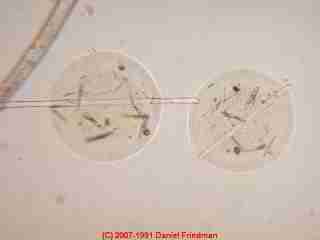
- Fungicidal sprays to "clean" mold:
can be an effective surface cleaning method, but much too often we find that the mold "expert" rushes the job, relying on the spray to "kill" or "immobilize" mold without first finding and removing the mold actual problem mold reservoir.
Sprays are not an effective substitute for actually cleaning or removing problem mold. See these articles:
- FUNGICIDAL SEALANT USE GUIDE
- FUNGICIDAL SPRAY ADVANTAGES
- MOLD SPRAY WARNINGS
- MOLD SANITIZER, SPRAY, BIOCIDE USE GUIDE - sources, choices, suppliers
Our photo (left) shows small particles that were immobilized in airborne droplets of a clear fungicidal sealant spray.
- HEPA Vacuum Cleaning to remove mold:
a HEPA-rated vacuum cleaner is used during dry surface cleaning methods to reduce airborne moldy dust and also to clean up moldy dust and debris from building surfaces.
Watch out: Don't use an ordinary household vacuum cleaner or "shop vac" that is not HEPA rated or you will simply increase the level of airborne mold in the building.
For an effective reduction of indoor dust levels and moldy dust levels in building areas outside of the mold remediation area, where no mold growth contamination was present, HEPA vacuuming is often recommended as a final step in complete building cleaning. - Laundry soap to clean or remove mold:
laundry soap is effective as a household cleaner but may be more concentrated than you need; we use laundry soap and two washings to clean up moldy washable goods like towels, clothing. Sometimes mold leaves a stain on soft goods and bleaching may be needed for cosmetic reasons. - Media blasting to remove mold
as we mention above, is useful for cleaning wood surfaces to be left exposed (for cosmetic reasons) or where the moldy surface is very irregular (such as a roof deck with protruding nails), preventing normal surface scrubbing methods.
see MOLD CLEANUP by MEDIA BLASTING for details - Mildew removers and mildewcides to clean or remove mold:
a mycologist will tell you that mildew does not grow in buildings - just on living plants. Mildewcides intended for plants should be restricted to that use. "Mildewcides" sold for indoor use as a "mildew remover" or "mildew cleaner" are mold cleaning products -
see MOLD REMOVING SOAPS and mold killing cleaners below. - Mold soaps and mold killing cleaners: special cleaners sold to clean up or remove mold may be fine, but they are not more effective than using household cleaners in cleaning a moldy surface. Some cleaners that contain a biocide and report that they will kill the mold are appealing to consumer fear, but are unnecessary.
See MOLD CLEANUP MISTAKES to AVOID and
see MOLD KILLING GUIDE. - Mold test kits to check for mold cleanup effectiveness:
we agree that testing for the effectiveness of mold cleanup and testing for cross contamination by moldy dust between the cleanup area and other building areas is appropriate when a costly or large-scale mold remediation job is to be performed. Tests should be done by an expert who has no relationship with the mold cleaning company.
Beware of mold test kits that rely on cultures (they are inaccurate - and beware of amateur mold sampling that may collect screening samples from the wrong place.
See details
at MOLD CULTURES - Natural or organic mold killers, organic mold cleaners, green mold removal products:
these cleaners are fine to use to clean up mold, and are preferred by people who want to avoid more harsh chemicals.
As our object is to remove mold leaving a clean surface, even simple water and a scrubby sponge could be used to clean a moldy surface. - Ozone to "remove" or "kill" mold
or odors is a mistake in a moldy building.
One of the most ridiculous magic bullet mold fixes we have seen is a costly "tenting" of the entire building so that the structure and its contents could be "sterilized" using ozone.
This magic bullet has been so abused in the mold industry that it has been specifically "not recommended" by the US EPA and other expert sources. See these articles for details: - Paint over mold?
Don't simply paint over mold with a "mold paint" or "mildewcide paint" - these steps are ineffective, mold usually grows back through the paint, and you have not removed the problem. - Steam cleaning to remove mold:
steam cleaning can be effective in cleaning thin cloth covered surfaces but it does not penetrate sufficiently to clean a moldy couch or carpet. Remember too that our object is not to kill mold (which some steam cleaners claim and which is inaccurate and ineffective anyway).
Our cleaning object is to remove the mold. Steam cleaners may claim to "destroy the mold" but in nearly twenty years of testing moldy upholstered furniture and carpets before and after they were "steam cleaned" for mold we have not found a single case where this was effective.
The steam does not penetrate fully through thick upholstered materials and even a very powerful commercial vacuum cleaner cannot pull enough mold and similar small particles from the center of an upholstered couch cushion nor a carpet to leave those products mold free. - Vacuuming to clean up mold:
we recommend using HEPA vacuum cleaners to clean up moldy dust or general dust in buildings after a mold cleanup job, but not to clean surfaces where mold is growing. Don't use an ordinary non-HEPA rated vacuum cleaner or you'll just be aerating the mold and other small dust particles.
Watch out: Don't try to clean a surface where mold is growing by just vacuuming - it's unlikely that vacuuming will remove enough of the mold growth that is adhered to the surface. - Vinegar to get rid of mold:
because it is a mild acid, vinegar makes a good household cleaner for many surfaces. Don't choose vinegar because you think your object is to "kill the mold" - that's not the correct objective.
See MOLD KILLING GUIDE.
We have no financial interest in any of these products. This data was discovered by internet search. We have no
scientific data as yet regarding the effectiveness, toxicity, chemical composition, nor durability of these products. We do not recommend using thick plaster or cementious coatings as these are more likely to later crack or leak, trapping
moisture inside against the wood and promoting worse mold growth.
How to Use Bleach to Clean Up a Moldy Surface
Bleaching or "killing" mold is not the objective.
Bleach will not kill all of the mold anyway - we can tease viable spores out of lots of "bleached mold" samples we see in the lab.
The object of mold removal is to clean the surface, to remove loose moldy material, not to try to sterilize the surface.
Certain mold-contaminated materials that cannot be cleaned (drywall, carpeting, curtains) should be discarded. Clothing and bedding linens or towels can be washed or dry-cleaned.
Keep that in mind. If you want to use bleach as a cleaning agent instead of other cleaners (soap and water would work just fine) here are some mold cleanup suggestions for homeowners from the Canadian Mortgage and Housing Corporation CMHC. Please
see BLEACHING MOLD, ADVICE for details of how to mix and use bleach to clean a hard surface in a building as well as warnings about where bleaching mold is a cosmetic band-aid that just won't work.
- Dilute bleach with one part household bleach to four parts of clean water (do not add other cleaners to this solution as you may accidentally cause the release dangerous chlorine gas)
- Ventilate the work area
- Wear rubber gloves and eye protection
- After physically cleaning and removing all loose mold, dirt, debris, from the surface being cleaned, let the solution stand on the surface for 10-15 minutes.
- Rinse the cleaned surface thoroughly
- Be sure that the cleaned surfaces are totally dry before restoring any building insulation, drywall, etc.
- Discard moldy fabrics or other similar materials that cannot be surface-cleaned.
Use Ammonia or CO2 for Cleaning Moldy Clothing?
Reader Question:
I’m planning to give my clothing to clean at this cleaners as they use CO2 cleaning.
This is some documentation on its mold disinfection powers.
- C. Cinquemani, C.Boyle, E. Bach, E. Schollmeyer, "Inactivation of microbes using compressed carbon dioxide—An environmentally sound disinfection process for medical fabrics", J. of Supercritical Fluids 42 (2007) 392–397, Deutsches Textilforschungszentrum Nord-West e.V., Adlerstraße 1, 47798 Krefeld, Germany, University of Auckland, Faculty of Engineering, Department of Civil and Environmental Engineering, Auckland, New Zealand (2006
Do you have any opinion if CO2 is ideal or another method? - H.G. 3/20/2014
Reply:
Using scholarly research tools and terms ammonia, mycotoxin, CO2, cleaning, clothing, etc. I have not been able to find a single scholarly article nor research defending the use of CO2 for addressing mold cleaning, mold odors, nor myxotoxin removal.
I did find a paper discussing using CO2 in cleaning up recycled paper (below). CO2 is discussed as a "green" method for dry cleaning clothing as it avoids using more ecologically harmful solvents.
The article you cite is of course scholarly research but focuses on bacterial contaminants and does not mention mold, fungi, nor mycotoxins. Further, as we have discussed, "dead mold" may still be harmful, allergenic, toxic, or may contain mycotoxins.
More important, we have not demonstrated by careful testing that the skin irritations you discussed earlier are related to mold as opposed to other environmental particles (such as insulation or insect fragments).
Blood tests for mold or mycotoxin exposure are an important tool in use by your physician but don't establish a link between illness and actual location or source of the exposure.
I have not been able to find scholarly articles nor research defending the use of ammonia for mycotoxin removal from clothing, furnishings, nor buildings, and I'd be grateful if your doctor who made that assertion could point us to a citation, journal article, research or some other source. Perhaps this view originated with some experiments with mycotoxin treatments in food cereals and grains as I cite below.
Ammonia in quaternary compounds is used in some sanitizers (as doubtless you already knew).
DF
Research on Mold Cleaning Products & Procedures
- A BRIEF GUIDE to MOLD, MOISTURE, and YOUR HOME, [PDF] U.S. Environmental Protection Agency US EPA - includes basic advice for building owners, occupants, and mold cleanup operations. See http://www.epa.gov/mold/moldguide.htm
- Canada Mortgage and Housing Corporation, CMHC, "Moisture and Air, problems and remedies, Householders Guide," NHA 5968, 1989, reprinted to 1995 cmhc-schl.gc.ca 800-668-2642. Cette publication est aussi disponible en francasi sus le tire: L'air et l'humidite - LNH 5969.
- US EPA - MOLD REMEDIATION IN SCHOOLS AND COMMERCIAL BUILDINGS [PDF] - US EPA
- US EPA - UNA BREVA GUIA a MOHO / HONGO [PDF]
- Beckman, Eric J. "Green chemical processing using CO2." Industrial & engineering chemistry research 42.8 (2003): 1598-1602.
- Blaney, Carol A., and Shafi U. Hossain. "Cleaning up recycled paper." Chemtech 27.2 (1997): 48-51.
- Bozoğlu, Faruk. "Different mycotoxin inactivation applications and their inactivation mechanisms." Zbornik Matice srpske za prirodne nauke 117 (2009): 27-35.
- Castegnaro, Marcel, et al. Laboratory decontamination and destruction of carcinogens in laboratory wastes: some mycotoxins. International Agency for Research on Cancer, 1991.
- C. Cinquemani, C.Boyle, E. Bach, E. Schollmeyer, "Inactivation of microbes using compressed carbon dioxide—An
environmentally sound disinfection process for medical fabrics", J. of Supercritical Fluids 42 (2007) 392–397, Deutsches Textilforschungszentrum Nord-West e.V., Adlerstraße 1, 47798 Krefeld, Germany,
University of Auckland, Faculty of Engineering, Department of Civil and Environmental Engineering, Auckland, New Zealand
(2006), original source: http://www.co2nexus.com/wp-content/uploads/2011/02/article-sterilization-of-hospital-textile.pdf
Abstract:
High-pressure (HP) CO 2 treatment was applied to disinfect a fabric which is frequently used in hospitals. The physical properties of the treated textile were evaluated and found not to be negatively influenced.
Subsequently, the significance of the main parameters influencing the disinfection process were determined using multi-factor analysis of variance. Efficacy of the developed technique was demonstrated and optimised for Gram- negative Escherichia coli and Gram-positive Micrococcus luteus .
Water addition was found to be crucial for the reduction of both bacteria species. Complete inactivation was achieved at temperatures as low as 20 ◦ C for E. coli and 65 ◦ C for M. luteus , respectively.
The effective pressure required for the disinfection was only 50 bar. Finally, based on the experimentally revealed results, an empirical non-linear model was developed describing the inactivation of E. coli and M. luteus in the low-temperature process using highly compressed liquid, gaseous or supercritical CO 2 - Houston, Marc, and Robert G. Hendrickson. "Decontamination." Critical care clinics 21.4 (2005): 653-672.
- Jemmali, Mongi. "Decontamination and detoxification of mycotoxins." Pure Appl Chem 52 (1979): 175-181.
- Kartal, S. Nami, Katsumi Shinoda, and Yuji Imamura. "Laboratory evaluation of boron-containing quaternary ammonia compound, didecyl dimethyl ammonium tetrafluoroborate (DBF) for inhibition of mold and stain fungi." Holz als Roh-und Werkstoff 63.1 (2005): 73-77.
- Rosio, Larry R., and Stephen H. Shore. "Apparatus and method for controlling the use of carbon dioxide in dry cleaning clothes." U.S. Patent No. 5,970,554. 26 Oct. 1999.
- Norred, W. P., et al. "Effectiveness of ammonia treatment in detoxification of fumonisin-contaminated corn." Food and chemical toxicology 29.12 (1991): 815-819.
- Trenholm, H. Locksley, et al. "Washing procedures using water or sodium carbonate solutions for the decontamination of three cereals contaminated with deoxynivalenol and zearalenone." Journal of agricultural and food chemistry 40.11 (1992): 2147-2151.
- Waldman, Jed M., and Kelly Raatz. "ABOUT MOLD." (1998).
[Discusses use of bleach as a disinfectant]
Mold Cleaning Procedures & Mold Remediation Standards Guidelines
- MOLD CLEANUP - WOOD FRAMING & PLYWOOD How to clean/seal mold from/on exposed lumber or plywood subfloor or roof sheathing indoors - some suggestions based on our field and laboratory research
- FLOOD DAMAGE REPAIR PRIORITIES - Advice on Cleaning Mold and Preventing Future Mold after a building flood list of links to documents including other States: California Mold Cleanup Standards, Texas Mold Cleanup Standards, Pennsylvania Mold Cleanup Standards, EPA, CDC, and other U.S. state, federal, and world mold standards
- MOLD in BUILDINGS - A 'how to' photo and text primer on finding and choosing the right spots to test for mold in buildings
- MOLD REMOVAL, MEDIA BLASTING - (complete article, with illustrations) on the effectiveness of baking soda media blasting for cleaning fungal contamination in buildings, Daniel Friedman, Dennis Melandro, originally published in Indoor Environment Connections, Rockville MD, June 2003
- MOLD APPEARANCE - WHAT MOLD LOOKS LIKE - detection and identification of mold allergens.
- MOLD APPEARANCE - STUFF THAT IS NOT MOLD but is often mistaken for it - things you may not want to test. Also, not all "black mold" is toxic - here are examples of harmless black mold.
- MN University of Minnesota - Fungal Abatement Safe Operating Procedure - http://www.dehs.umn.edu/iaq/sop.html
- NY New York City Mold Remediation Guidelines - Assessment and Remediation of Fungi in Indoor Environments - http://www.nyc.gov/html/doh/html/epi/moldrpt1.shtml
Producers of Mold Remediation Products, Fungicidal Sprays, Sealants, Biocides, Washes
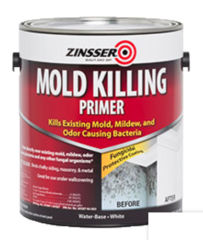 See DISINFECTANTS, SANITIZERS, FUNGICIDAL-SEALANTS SOURCES for our complete product list; excerpts are below.
See DISINFECTANTS, SANITIZERS, FUNGICIDAL-SEALANTS SOURCES for our complete product list; excerpts are below.
We have no financial interest in any of these products. This data was discovered by internet search. We have no independent scientific data as yet regarding the effectiveness, toxicity, chemical composition, nor durability of these products.
Producers of mold remediation products are welcome to Contact Us by email (please, not by telephone) to suggest product listings, website technical content, or technical corrections.
- ASBESTOS ENCAPSULANTS & SEALERS [Web Article] - Sealant Paints & Coatings for Asbestos, Asbestos Cement or Transite Surfaces
- Anabec Systems - 9393 Main St. • P.O. Box 433 • Clarence, NY 14031 see http://www.anabec.com/index.cfm Tel: 800-369-8463 Anabec NG2000™ produces many products used in mold remediation projects.
- Bioshield BST - Bioshield BST Protectant RTU75™ - Bioshield Technologies - Bio Shield Technologies
P.O. Box 15, Clarks Summit, Pa 18411, Tel: 717-489-1728 Fax - 717-489-0228
Email – info@bioshieldtech.com
Web – www.bioshieldtech.com - http://www.bioshieldtech.com/Contact-Us-a/138.htm The company indicates that it
"... offer a wide assortment of ... antimicrobial and personal protection products .... We work with only the industry’s leading manufacturers—DuPont, Agion, Discovery Medical, Anabec Systems, Woodward Labs, ..." - Fiberlok Technologies, Tel: 800-342-3755 - http://www.fiberlock.com/products/8360.html
MSDS sheets for the company's products can be found at fiberlock.com/products/msds.html
The company refers website visitors to a dealer locator network and states
"In the event you are unable to locate a distributor near you, please call us at 1-800-342-3755 " - Foster Products, 1105 Frontenac St., Aurora IL 60504, Tel: 800-231-9541, Email: fosterproducts@hbfuller.com - http://www.fosterproducts.com/ -
MSDS sheets for the company's products can be found at h osterproducts.com/default.aspx?PageID=msds - FOSTERS 40-51 SDS Fosters Sheer Defense Mold Resistant Clear Sealer [PDF] H.B. Fuller Construction Products,
- Microban Antimicrobial Products - https://www.microban.com/. The company indicates that
"Microban® antimicrobial protection is built-in to products during manufacturing to provide continuous antimicrobial product protection. Microban protection can be found in hundreds of consumer, industrial and medical products around the world." - MICROBAN SAFETY DATA SHEET [PDF] - excerpt "Protection That Lives On Microban Professional Brand 24 Hour Keeps Killing 99% of Bacteria For Up To 24 Hours Sanitizing Spray " Microban™ Microban Products Company Address 11400 Vanstory Drive Huntersville, NC 28078 USA Telephone 704-875-0806 Email infoleads@microban.com Web: microban.com
- Protex 63, Trask Research, W.M. Barr, P.O. Box 1879, Memphis, TN 38101, - http://www.traskresearch.com/contact.html -
Tel: 1-866-370-2499 The company indicates that
"Protex 63 is an EPA registered fungicidal sealant that seals against mold, mildew, and green algae" and
"Protex™ 63 is a durable, sealant and coating that resists mold, mildew and algal growth. Protex™ dries clear and does not affect the appearance of most surfaces. Protex™ is especially formulated for exterior use."
MSDS data sheets are available from the manufacturer. - Rocima™40, produced by Dow Chemical Company's subsidiary Rohm and Haas, is a
"Broad spectrum, non-metallic liquid fungicide for a wide variety of fungal organisms"
http://www.rohmhaas.com/wcm/products/product_detail.page?display-mode=tds&product=1120851
The MSDS can be found at http://www.rohmhaas.com/wcm/products/product_detail.page?display-mode=msds&product=1120851 - ZINSSER "MOLD KILLING PRIMER" TDS [PDF] Rust-Oleum Corporation 11 Hawthorn Parkway Vernon Hills, Illinois 60061
Other Mold Cleaning Products, Paint Additives, Fungicidal Sealants, Paints, Coatings
- environmentsensitive.com/air.html - Disodium Octaborate Tetrahydrate (DOT)
- wwenvironmental.com/paint.htm - paint additive that includes a mildewcide, website includes MSDS and some product info
- allergystore.com/mold.htm - Sure Cote [we do NOT recommend using the mold test kit sold by this website]
- allerx.com/x158.htm = AllerX X-158 claims to protect from mold for 180 days
- Waterglass (Sodium Silicate) used as a binder in paints may also be a possible coating. It is water soluble and
produces a "heat resistant and intumescent" film. However to date we have no data regarding its use in this
application.
Readers and product suppliers are welcome CONTACT Us by email (please do not telephone) to suggest additional products to this list and to provide technical literature on product use and effectiveness.
...
Reader Comments, Questions & Answers About The Article Above
Below you will find questions and answers previously posted on this page at its page bottom reader comment box.
Reader Q&A - also see RECOMMENDED ARTICLES & FAQs
On 2022-02-21 by Inspectapedia Com Moderator - Can CLR be used on plywood?
@Sandy,
CLR is a Calcium - Lime - Rust remover intended for use on ."... on surface rust stains from bathtubs, toilet bowls, sinks, glass, chrome, fiberglass, stainless steel, humidifiers, dishwashers, washing machines and showerheads."
None of those include wood.
And you would not expect to find Calcium, Lime nor rust on a plywood surface.
Now there might be a water stain on wood that included copper (green) on plywood but most wood stains won't be the substances treated by CLR.
So in my opinion using CLR on plywood would in general be inappropriate.
On 2022-02-21 by Sandy
Can CLR be used on plywood?
...
Continue reading at MOLD CLEANUP GUIDE or select a topic from the closely-related articles below, or see the complete ARTICLE INDEX.
Or see MOLD CLEANERS - WHAT TO USE FAQs - questions & answers posted originally on this page
Or see these
Recommended Articles
- BLEACHING MOLD, ADVICE
- COSMETIC MOLD CLEANUP EXPENSE
- MOLD CLEANUP COMPANIES
- MOLD CLEANUP, DRY THE MOLD-CLEANED SURFACE
- MOLD CLEANUP, LIMITATIONS
- MOLD CLEANUP MISTAKES to AVOID
- MOLD CLEANUP - WOOD FRAMING & PLYWOOD
- MOLD CLEANUP with BLEACH
- MOLD & FUNGUS on WOOD SIDING: CLEAN & PREVENT
- MOLD PRODUCTS, INEFFECTIVE
- OZONE MOLD KILL TREATMENT
- UNNECESSARY MOLD CLEANUP COSTS
Suggested citation for this web page
MOLD CLEANERS - WHAT TO USE at InspectApedia.com - online encyclopedia of building & environmental inspection, testing, diagnosis, repair, & problem prevention advice.
Or see this
INDEX to RELATED ARTICLES: ARTICLE INDEX to BUILDING ENVIRONMENT
Or use the SEARCH BOX found below to Ask a Question or Search InspectApedia
Ask a Question or Search InspectApedia
Try the search box just below, or if you prefer, post a question or comment in the Comments box below and we will respond promptly.
Search the InspectApedia website
Note: appearance of your Comment below may be delayed: if your comment contains an image, photograph, web link, or text that looks to the software as if it might be a web link, your posting will appear after it has been approved by a moderator. Apologies for the delay.
Only one image can be added per comment but you can post as many comments, and therefore images, as you like.
You will not receive a notification when a response to your question has been posted.
Please bookmark this page to make it easy for you to check back for our response.
IF above you see "Comment Form is loading comments..." then COMMENT BOX - countable.ca / bawkbox.com IS NOT WORKING.
In any case you are welcome to send an email directly to us at InspectApedia.com at editor@inspectApedia.com
We'll reply to you directly. Please help us help you by noting, in your email, the URL of the InspectApedia page where you wanted to comment.
Citations & References
In addition to any citations in the article above, a full list is available on request.
- In addition to citations & references found in this article, see the research citations given at the end of the related articles found at our suggested
CONTINUE READING or RECOMMENDED ARTICLES.
- Carson, Dunlop & Associates Ltd., 120 Carlton Street Suite 407, Toronto ON M5A 4K2. Tel: (416) 964-9415 1-800-268-7070 Email: info@carsondunlop.com. Alan Carson is a past president of ASHI, the American Society of Home Inspectors.
Thanks to Alan Carson and Bob Dunlop, for permission for InspectAPedia to use text excerpts from The HOME REFERENCE BOOK - the Encyclopedia of Homes and to use illustrations from The ILLUSTRATED HOME .
Carson Dunlop Associates provides extensive home inspection education and report writing material. In gratitude we provide links to tsome Carson Dunlop Associates products and services.


